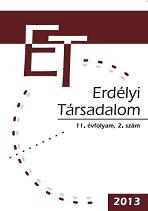Szelektív vándorlás és a nemek kiegyensúlyozatlan aránya a rurális térségekben
Selective migration and unbalanced sex ration in rural regions
Author(s): Ildikó Győrffy, Zoltán Nagy, Tekla Sebestyénné Szép, György KocziszkySubject(s): Social Sciences
Published by: Presa Universitara Clujeana
Keywords: migration; sex ration in rural region
Summary/Abstract: A region’s competitiveness and future performance is determined by its capacity to retain its population. This capacity on the other hand influences the structure of the region’s labour market both qualitatively and quantitatively. Thus, improving the attractiveness of the region, retaining the population, as well as offering incentives for its inhabitants not to migrate become primordial objectives of economic and regional policies. According to international studies changes in the structure of economies, as well as the growth of the service sector have led to an increase of the share of women in total employment. Of course, growing female employment has been strongly related to migration. In the peripheral and mostly underdeveloped rural regions of Europe traditional male economic subsectors have maintained their dominant role. This may have contributed to the gender selective nature of migration: as a reaction to the lack of employment opportunities in the home country young women have become more likely to migrate, creating thus a numerical male dominance in the younger generations in the sending societies. In our paper we study five regions of the European Union [(Saxony-Anhalt (Germany), Kainuu (Finnland), Västernorrland (Sweeden), North-Great-Plain and North-Hungary (Hungary)] in order to explore the reasons and consequences of female migration, to identify the needs and expectations of young men and women living in the rural areas, and fi nally, to analyse the relationship between the unbalanced gender ratio in the young adult generations and economic development.
Journal: Erdélyi Társadalom
- Issue Year: 11/2013
- Issue No: 02
- Page Range: 85-96
- Page Count: 12
- Language: Hungarian

